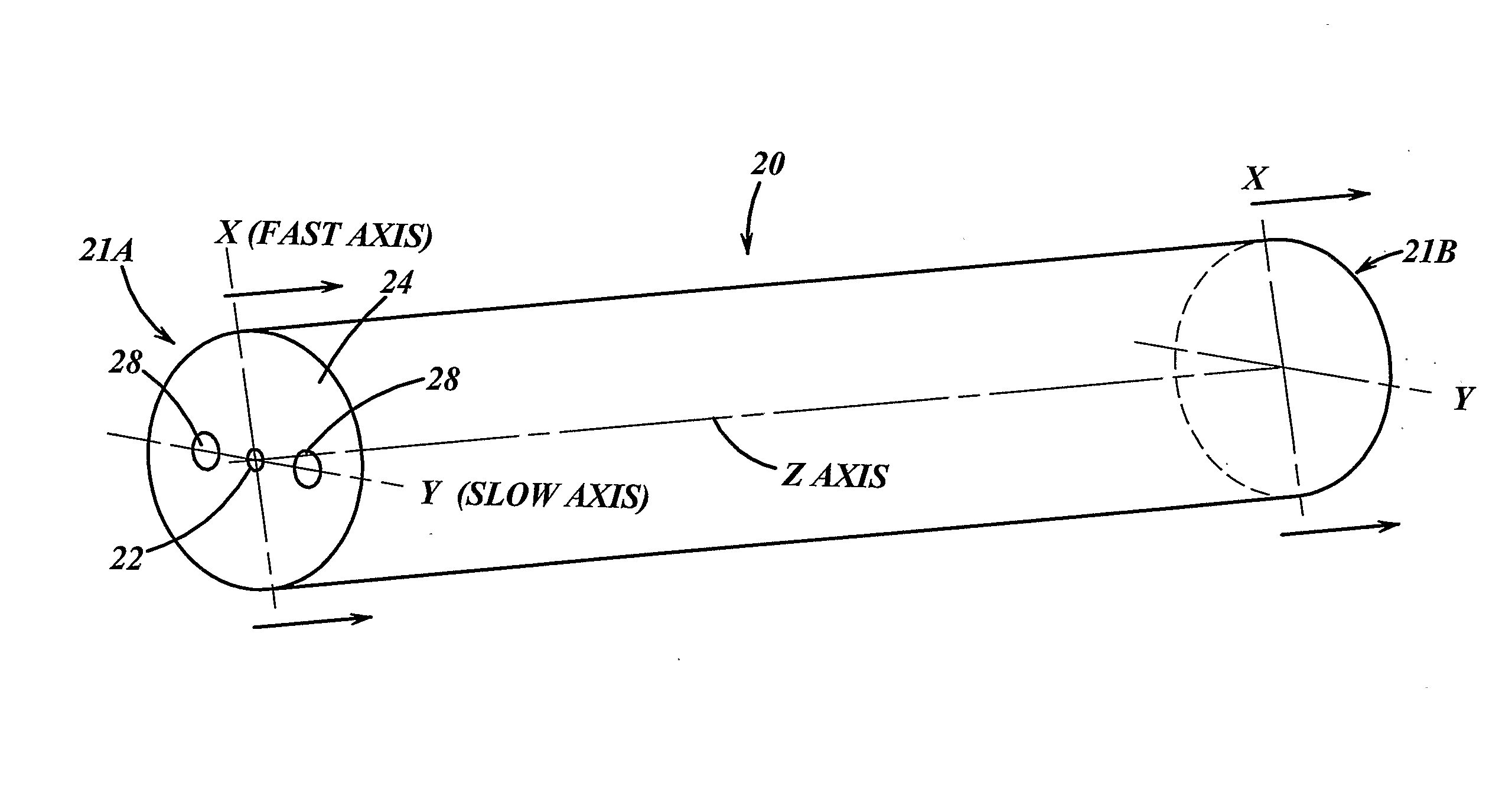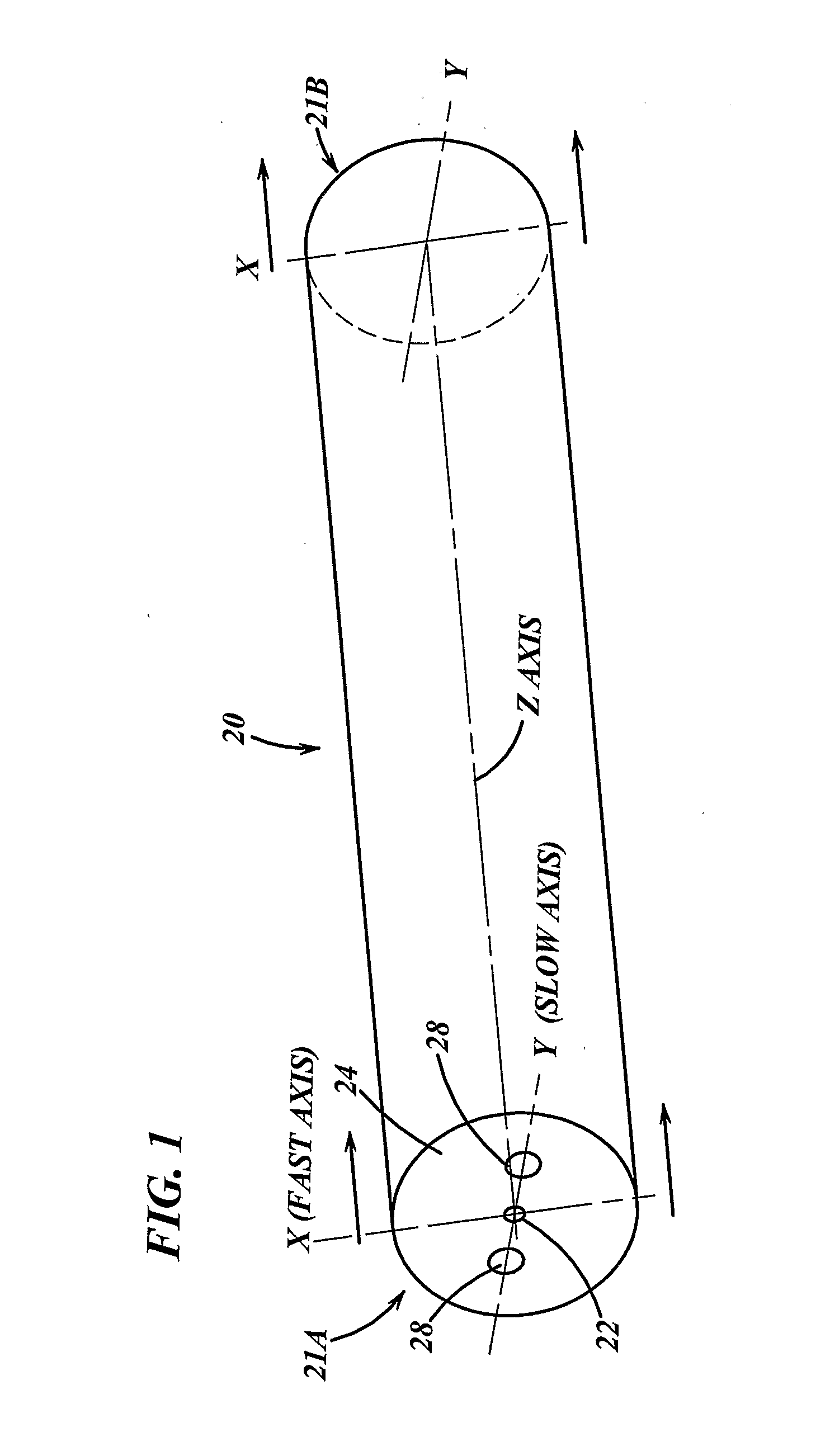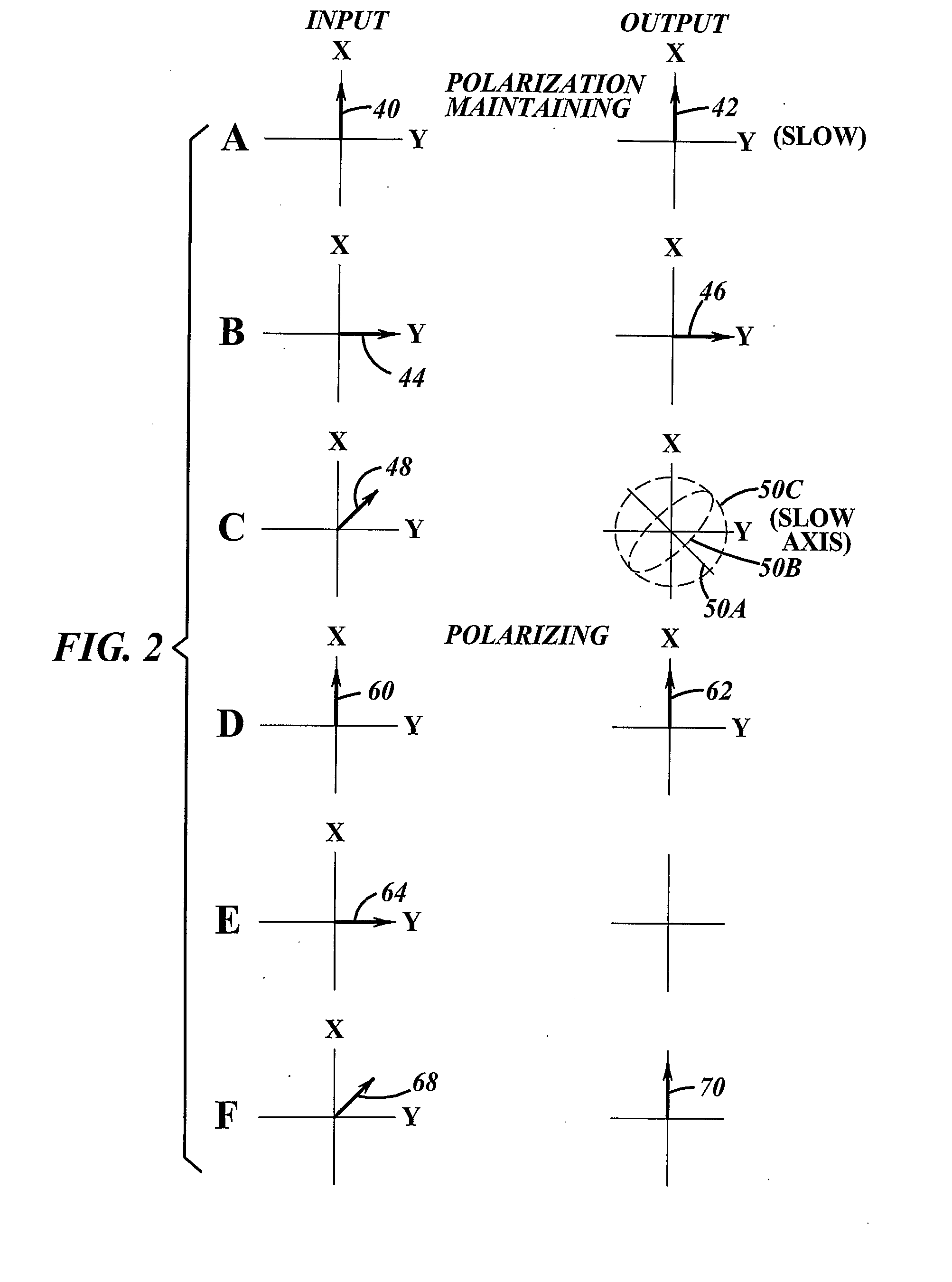Method and Apparatus for Providing Light Having a Selected Polarization With an Optical Fiber
a technology of optical fiber and polarization, applied in the field of optical devices, can solve the problems of insufficient power output of available optical fiber lasers and amplifiers, inability to operate over the wide range of wavelengths available from other types of lasers or amplifiers, and inability to efficiently convert wavelengths, etc., to achieve the effect of increasing bend loss, reducing m2 parameter, and increasing bend loss
- Summary
- Abstract
- Description
- Claims
- Application Information
AI Technical Summary
Benefits of technology
Problems solved by technology
Method used
Image
Examples
working examples
[0119]In this section, the design and fabrication of an optical fiber apparatus for providing a selected polarization of light is described, and experimental results presented. Because optical fibers that can handle higher powers are of principal interest, the apparatus described below used LMA fibers. The invention is not so limited, however, as is readily understood by one of ordinary skill in the art informed of the present specification. Experimental demonstration of an apparatus according to the present invention using PM-LMA optical fiber having a core diameter of 20 μm coil yielded a laser slope efficiency of ˜70% with a polarization ratio (PR) >10 dB, with the apparatus, which was configured as a laser, operating in substantially a single mode.
[0120]Two optical fibers are discussed, namely, Fiber A and Fiber B. Both fibers can be considered LMA fibers. Fiber A includes a core having a 20 μm diameter and a first cladding disposed about and adjacent the core and having a 400 μ...
PUM
 Login to View More
Login to View More Abstract
Description
Claims
Application Information
 Login to View More
Login to View More - R&D
- Intellectual Property
- Life Sciences
- Materials
- Tech Scout
- Unparalleled Data Quality
- Higher Quality Content
- 60% Fewer Hallucinations
Browse by: Latest US Patents, China's latest patents, Technical Efficacy Thesaurus, Application Domain, Technology Topic, Popular Technical Reports.
© 2025 PatSnap. All rights reserved.Legal|Privacy policy|Modern Slavery Act Transparency Statement|Sitemap|About US| Contact US: help@patsnap.com



